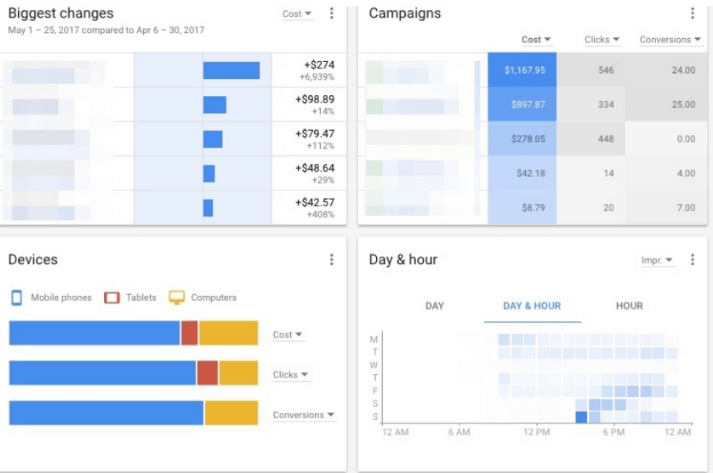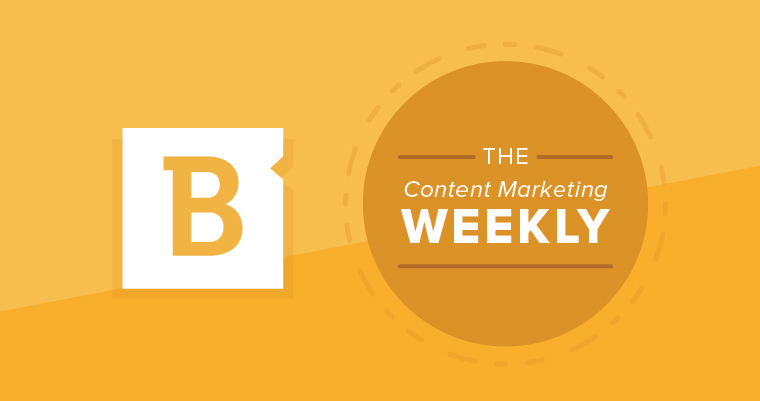In addition to Vogue unveiling the most iconic cover in history and ABC airing the most boring season finale of one of its longest-running reality shows, content marketing happened this week! The four items below are arguably far more interesting to you (unless you’re a Beyoncé fan like myself), so let’s get to it.
A Look at the New Google Ads (AdWords) Interface
If you run paid ads, you definitely want to take note of Google’s newest advertising change. What was previously AdWords is now Google Ads, and the new name comes with some nice user interface changes. Jeff Baum detailed some of the most important ones on Search Engine Land.
One of these updates is the new account overview, viewable when you first log in. Now you instantly see various performance metrics such as which ads are most displayed, new words that appear in searches and other details. This immediate view lets marketers see how an ad is performing so they can optimize critical areas more quickly than before.

The update also lets you combine various demographic targets, (for example, gender and age) for more advanced analysis. There are a lot of other awesome features, so be sure to check them out!
How to Discover New Customers with Content Discovery
The first thing that grabbed me about this article was the idea of brands discovering customers. We often think of marketing in terms of the opposite — i.e., content helps customers discover your business. But what happens when we look at the situation from a different perspective? In fact, what happens when we examine commonly held beliefs about what does and doesn’t work in our industry.
Adam Singolda, CEO of Taboola, touches on these ideas in a discussion with MarTech Advisor. The conversation covers a lot of ground, and one of the first topics is how marketers should think critically about how they respond to consumer changes.
“The risk in optimizing for the latest user behavior is that we have to also refresh our KPIs to measure success,” Singolda said.
I love that statement, as it points out something we marketers often overlook. Yes, creating strategies in accordance with our audiences’ behavior helps our overall sales goals. But what if that behavior changes at a rate that’s faster than our ability to measure results. If, as in Singolda’s example, we as an industry focus on three-second videos in 2019 and “moving thumbnails” the year after, how useful is the data we collect for long-term strategies? For establishing consistent branding guidelines? At what point do our audiences’ attention spans interfere with our abilities to present ourselves as cohesive companies?
I don’t think we need to be worried yet, but it’s definitely a subject worth thinking about. As the life span of the newest marketing buzz grows shorter and shorter, businesses need to think about which innovative strategies support their longevity versus the ones that are simply a passing fad.
Singolda provides a lot more interesting ideas here.
5 Reasons Not to Write That Meta Description
This headline from Search Engine Journal gave me pause for the same reason the piece from MarTech did: It’s something I haven’t heard before. I’ve written my fair share of meta descriptions and, as writer Stephen Watts implies, they can be a tedious necessity.
But, as he pointed out, Google updates its criteria so frequently and without prior announcements that any changes made in the name of optimization could work against you in a few short months.
Plus, Google makes its own snippets, which might even be an advantage for your brand.
Read the full piece for more reasons why you don’t always have to optimize your meta descriptions.

7 Awful First Sentences That are Killing Your Outreach Emails
HubSpot compiled a great list of terrible openings and, okay, I’ll admit, I’m probably guilty of a few of these. I also roll my eyes hard when I receive them in return.
These opening sentences aren’t just cliches, they’re also boring and some are slightly condescending.
“Did you find what you were looking for?”
Ugh. Shut up. The suggested, “Did our pricing page have all the details you need?” is so much better. It takes away the confusion and gives you a better opening for a follow-up conversation. Plus, by referencing a specific pain point, you come across less like you’re selling and more like you’re seeking feedback. Even if you don’t land the sale, you’ll have something to take to your web development team to better optimize the page or asset in question.
For the other six bad openers and suggestions for alternatives, check out the full post on HubSpot.
Got any interesting content marketing news? Share it in the comments! And don’t judge me for including a reference to The Bachelorette. It was in The Washington Post, so it counts as news.




